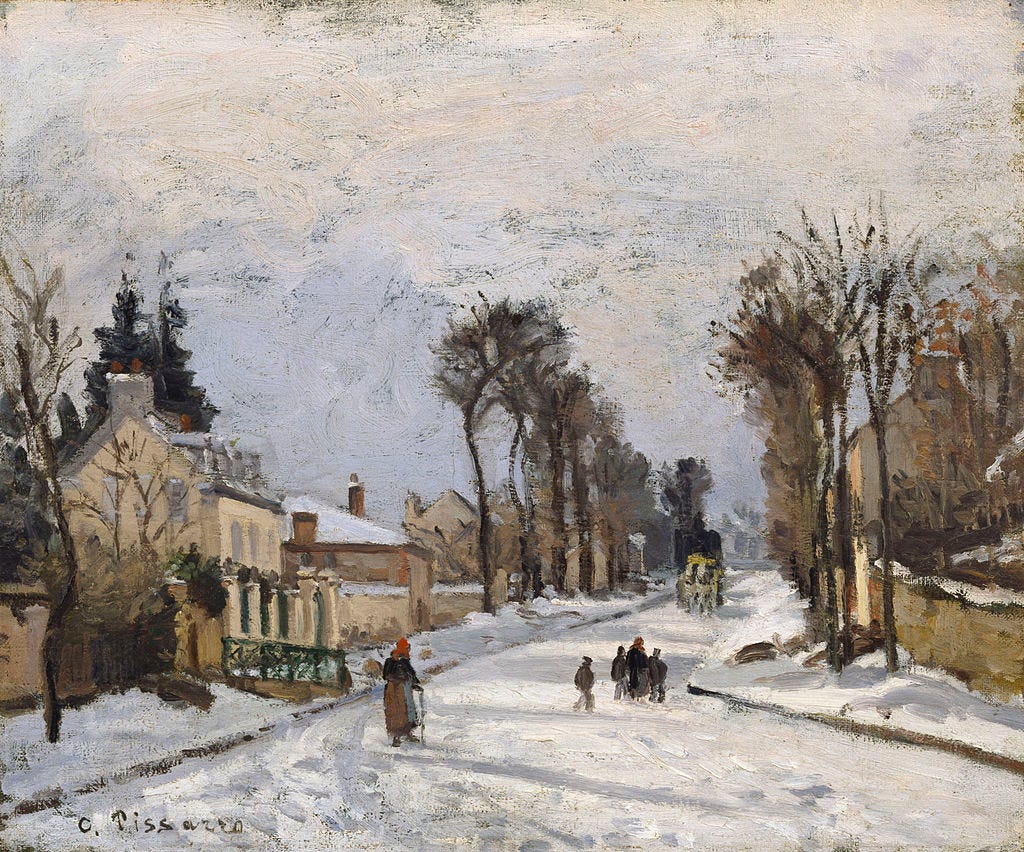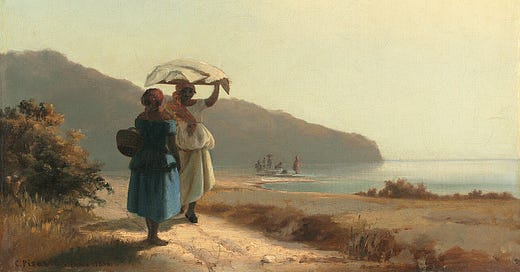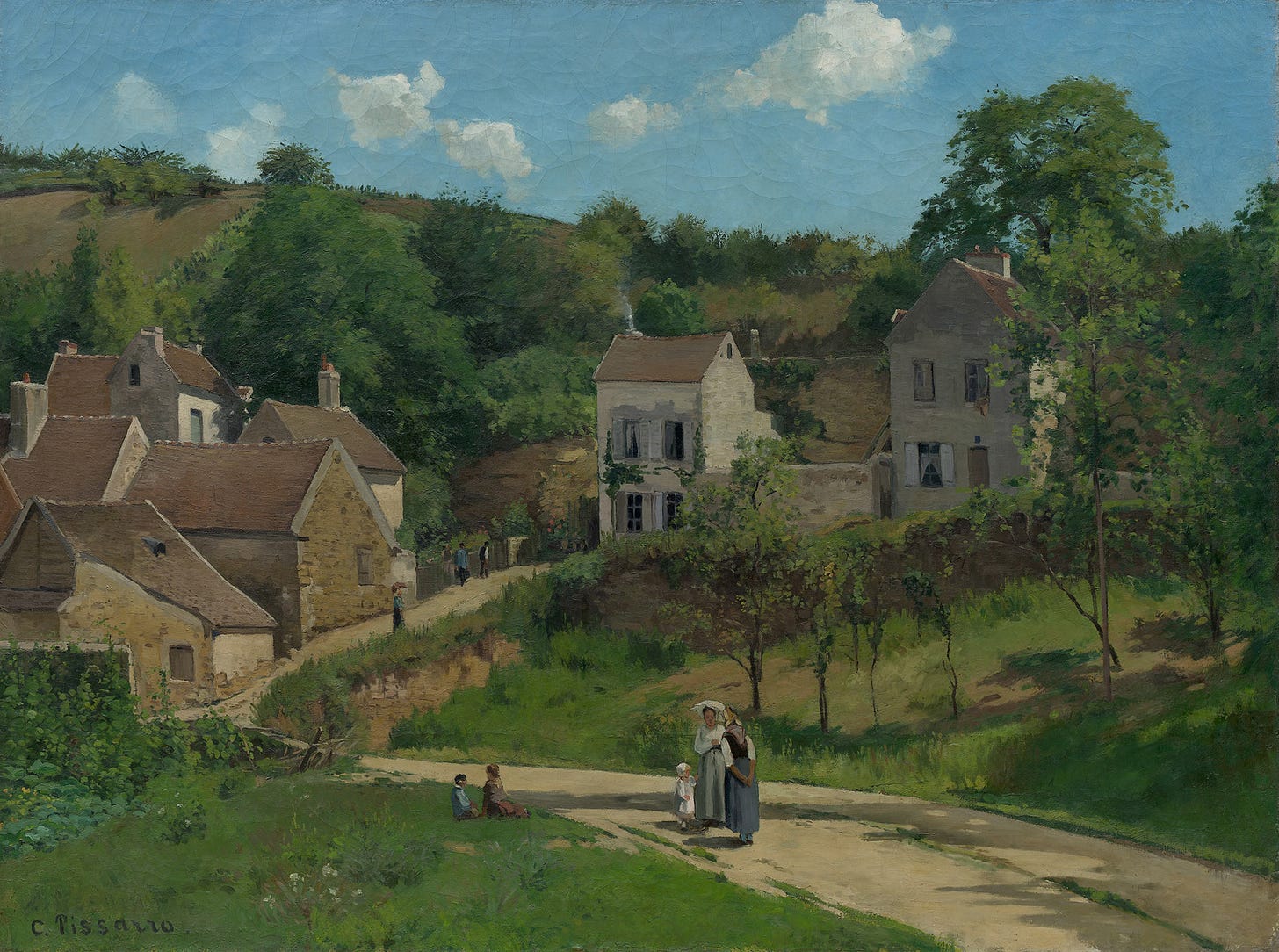In 1853, when he was just starting out in his professional life as an artist, the 23 year old Camille Pissarro had a style of painting which is vastly different to the pieces he has since become most known for.
Though still always predominately a landscape painter - his works were notable for their smoothly painted surfaces, classical influences, and the hints of exotic light, as we can see in our first work today (below).
And by extension, they generally gained a warm reception from the more academically minded critics of the time - while also gaining acceptance into exhibitions at the prestigious Paris Salon (which, in essence, was the kind of governing body and core establishment for the Parisian art world at the time . . . with the power to make or break the career of all up and coming painters!)
However, a few key moments in Pissarro’s life would eventually lead him in an entirely different direction with his art - taking him from the walls of the Paris Salon and the world of a classical painter, to becoming a central figure in arguably the most “anti-establishment” art movement Paris had ever seen.
The first of these moments came when Pissarro met his mentor Jean-Baptiste-Camille Corot - an older artist, who was a particular advocate for creating works “en plein air” (i.e painting out in nature, rather than always cooped up in a studio.)
And while Corot’s way of working often meant only starting a work outside, before then returning to a studio later on to finish the painting off at a slower pace - for Pissarro, “en plein air” came to mean something much more exciting.
It was a chance to embrace his natural tendency towards working at a fast pace . . . and soon enough, even Corot himself would have been marvelling at how his younger friend could finish such accomplished works in only a single sitting.
But for Pissarro, this was really just the start of it all. And in 1859, his career trajectory would shift even further when he became friendly with two other younger painters by the name of Claude Monet and Paul Cezanne.

This time, Pissarro was the older artist by about 9 years - hence becoming somewhat of a mentor to both of his friends. But make no mistake, they influenced his artistic ideas just as much as he had influenced theirs - and, in particular, Pissarro related to their sense of disenchantment with the recognised art establishment.
After all, the Paris Salon had kept a stranglehold over the art world for decades - but as they were such slaves to tradition, it had become almost impossible for any artist to feel free in their own creativity.
Thus, Pissarro and his friends started casually plotting how they might one day hold their own exhibition; a kind of “anti Salon” . . . where they could really start to shake up the Parisian art world, and bring to the wider public paintings in a style that had hardly even been dreamt about before!
_
Sadly, despite a couple of half hearted attempts to arrange this kind of exhibition in the early 1860s . . . it would be another 15 years before anything could really come of these ideas.
And before then, Pissarro would first have to suffer arguably the most important change of all in terms of the direction his work could go in.
Keep reading with a 7-day free trial
Subscribe to Art Every Day to keep reading this post and get 7 days of free access to the full post archives.





